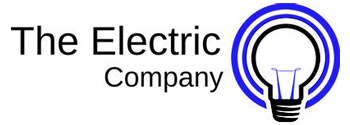Most homeowners can identify their electrical panel as that grey metal box mounted on a wall in the basement, garage, or utility closet, and they know that it functions like a control center for the electricity flowing throughout the property. If we look at the big picture, the panel consists of breakers that direct the flow to specific circuits such as the kitchen outlets, the bathroom lights, the washer and dryer, the air conditioning unit, and others. Let’s review a few fun and surprising facts we can find when we go behind the breakers.
Double-Duty Circuit Breakers
In older homes, a single breaker might control multiple circuits; for example, the lights and outlets combined into the same circuit. For safety reasons, this double-duty functionality isn’t as common in modern houses. Some homeowners who move into older properties learn about this when a breaker is tripped by a short, and all the outlets stop working at the same time the house darkens.
Power Panel Rating and Labeling
Modern electrical panels have a label that tells you the total amperage rating of the panel. This label indicates the rating of the panel as a piece of electrical equipment; it shows how much electrical current the panel can handle safely. If the panel in your house is older, you will not see this label. This is usually the case when the boxes are painted grey and black. They started to be painted in beige and other neutral colors in the early 21st century.
Electrical Panels Must Match the Main Breaker
The wiring in your house forms part of a residential circuit that is divided into subcircuits. There’s a main breaker that controls all the electricity to your house. It stands between the power grid and the electrical panel. The main breaker should not be rated for more amps than the service entrance cable supplying power to your house.
Circuit Breakers Always Lag Behind
Your circuit breaker box is rated for the exact amount of electricity your house might use all at once, but it always operates at 80% of that capacity instead. This makes sense if you think about circuit breakers as the release valves on a pressure cooker. Breakers are there to prevent the circuit and its components from getting too hot and potentially causing a fire. Just like the pressure cooker valve, circuit breakers are designed to trip at 80% of their capacity. You can think of this feature as a buffer zone that quickly responds to sudden surges in electricity before things overheat.
Electrical Panels Can Be Upgraded
Making your electrical panel more effective and safer can be accomplished with a whole-house surge protection system, which is installed between the main breaker and the metal box. Surge protectors safeguard the home circuit from voltage spikes caused by lightning and other situations that can be damaging to your electronics and appliances.
If you have any issues with your home electrical panel, wiring, or circuits in Modesto, CA, get in touch with us at The Electric Company today.




